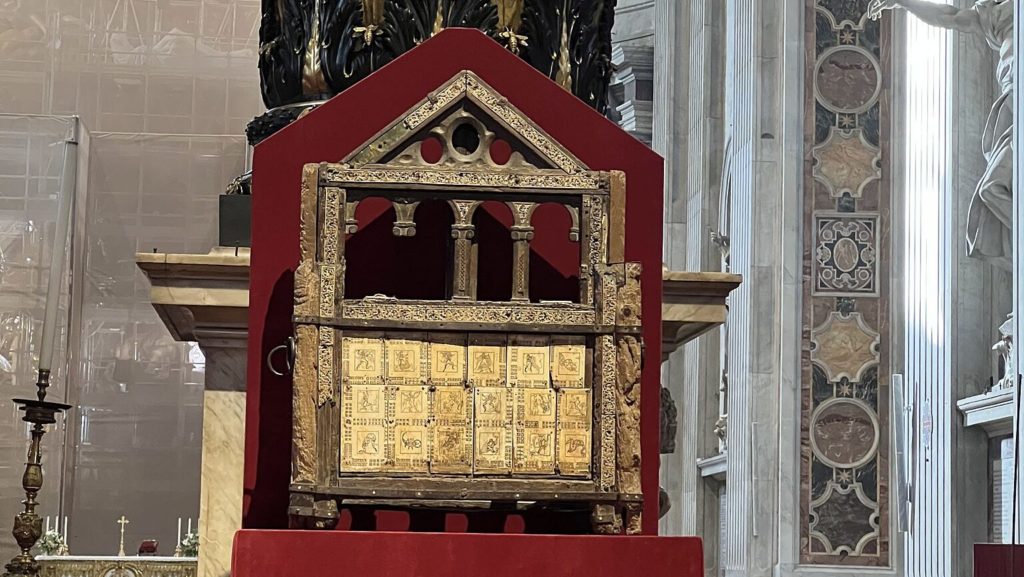It’s 39 years since I was received into full communion with the Catholic Church. In some ways it seems like an eon ago. In other ways it seems like yesterday.
It’s almost four decades now, but I still experience, every February, a certain sense of homecoming. On Feb. 22, the Church celebrates the feast of the Chair of St. Peter, Apostle. What a strange theme for a feast day. We celebrate a chair! If you go to Rome and visit St. Peter’s Basilica, you’ll find an actual chair there, on display for your veneration.
The feast of the Chair has ancient origins. Some of the earliest complete Christian calendars date to the sixth century, and they include this celebration. They say that the date marks the first time the Prince of Apostles celebrated Mass with his Roman flock.
Today, we continue the tradition of our Fathers, and we celebrate the office of St. Peter’s successors as well. We celebrate the papacy.
We have good reasons to celebrate. Peter’s Chair is a point of unity for us. It is a haven of safety. We have the guarantee of divinity on the matter. Jesus said to Simon: “And I tell you, you are Peter [Rock], and on this rock I will build my church, and the powers of death shall not prevail against it. I will give you the keys of the kingdom of heaven, and whatever you bind on earth shall be bound in heaven, and whatever you loose on earth shall be loosed in heaven” (Matthew 16:18–19).
In my youth I came to Christian faith as a Protestant, and I experienced so much that was good in Reformed and evangelical churches. I was ordained a Presbyterian minister and served as a pastor of congregations I dearly loved.
But the condition of Protestant Christianity was a mess. There was no unity in essential matters. In fact, there was contention over almost every point of doctrine, practice, and scriptural interpretation. Clergy disputed among themselves over whether baptism was for babies or only for adults — and whether sacraments were merely symbolic or something more. Everyone agreed that the answers were in Scripture, but disagreed on what Scripture was saying. And no one on earth had the authority to settle the disputes.
I could not pretend that this situation was acceptable. In no way did it reflect the condition of the Church as I saw it in the pages of the New Testament.
The branches could not bear fruit apart from the vine (John 15:5–6).
I found consistency, coherence, and stability on the Rock that has demonstrably been foundational in the Church since the first century. I found confirmation of this in the works of Clement of Rome, Ignatius of Antioch, Cyprian of Carthage, Basil the Great, Jerome of Stridon, Cyril of Alexandria — and the many others I came to know as “Fathers of the Church.” Each of them and all of them recognized that there was one “Papa” on earth, and he was Peter and all those who came to occupy his chair.
That’s reason to celebrate.

